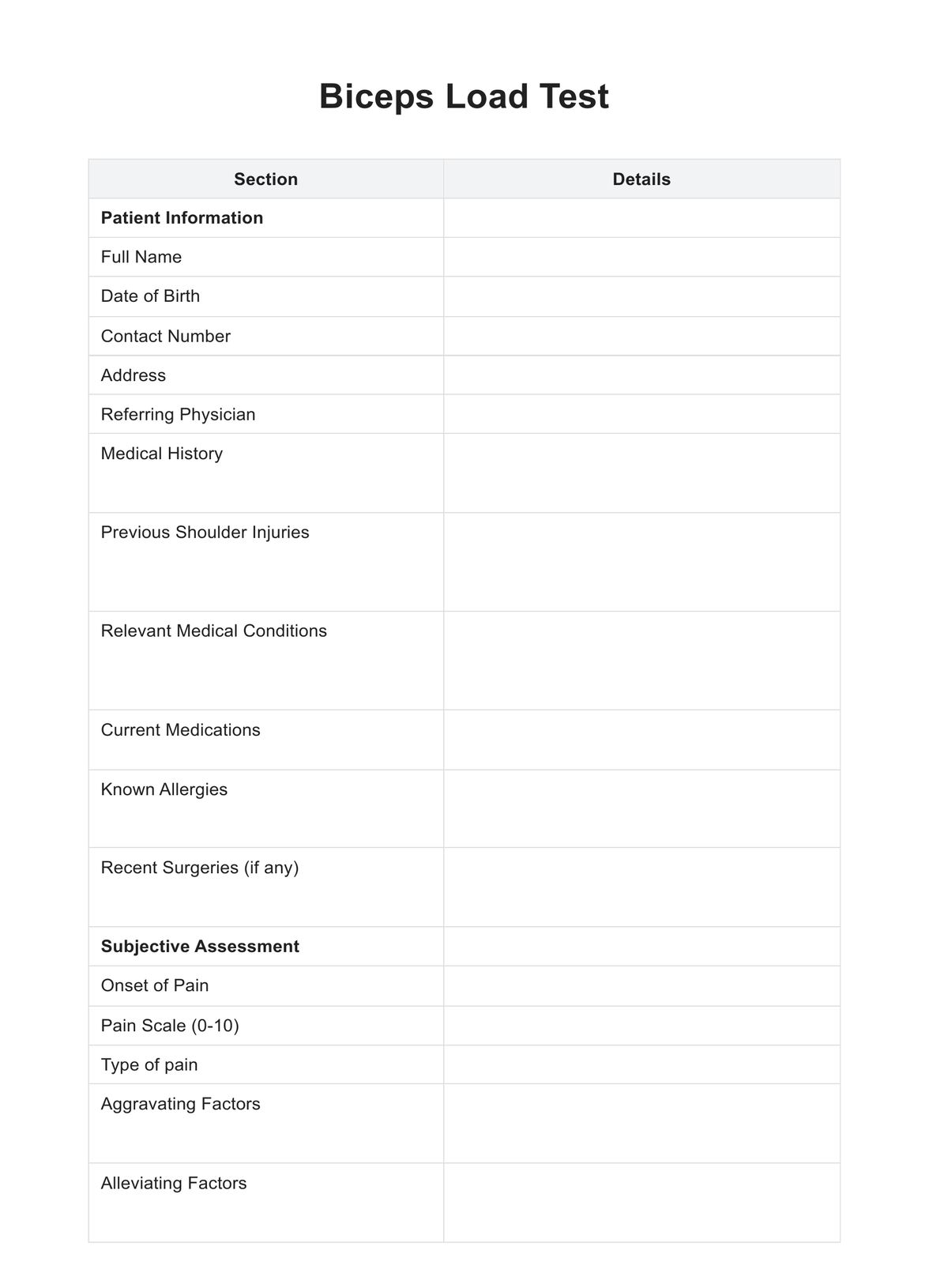Yes, the Biceps Load Test is adaptable for all age groups. However, modifying the test based on the patient's comfort and medical condition is essential.

Biceps Load Tests
Dive into our comprehensive guide on the Biceps Load Test. Unlock the science behind it and discover why Carepatron is the go-to app for professionals!
Use Template
Biceps Load Tests Template
Commonly asked questions
The Biceps Load Test boasts high sensitivity and specificity rates, making it reliable when conducted correctly.
Absolutely! Carepatron offers seamless integration capabilities with various health platforms to ensure a cohesive user experience.
EHR and practice management software
Get started for free
*No credit card required
Free
$0/usd
Unlimited clients
Telehealth
1GB of storage
Client portal text
Automated billing and online payments











